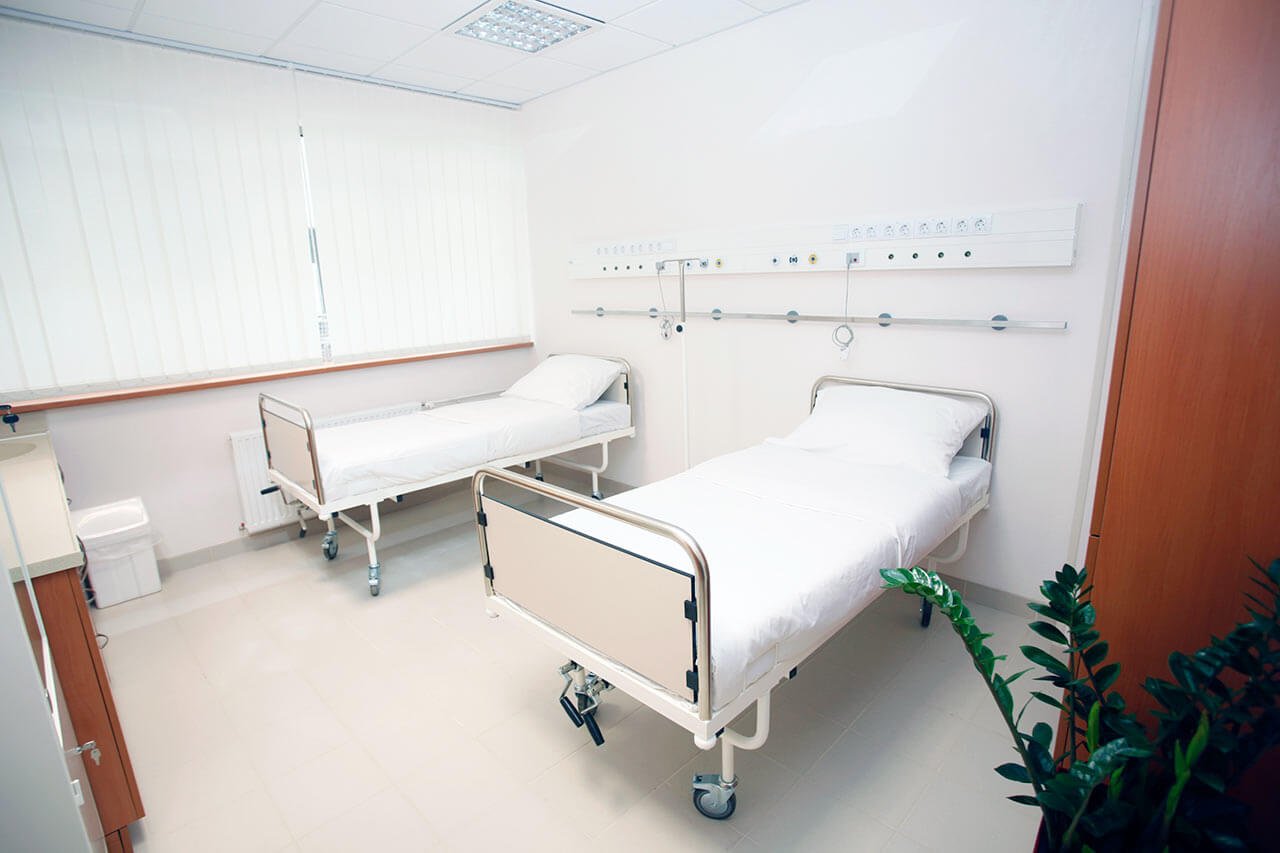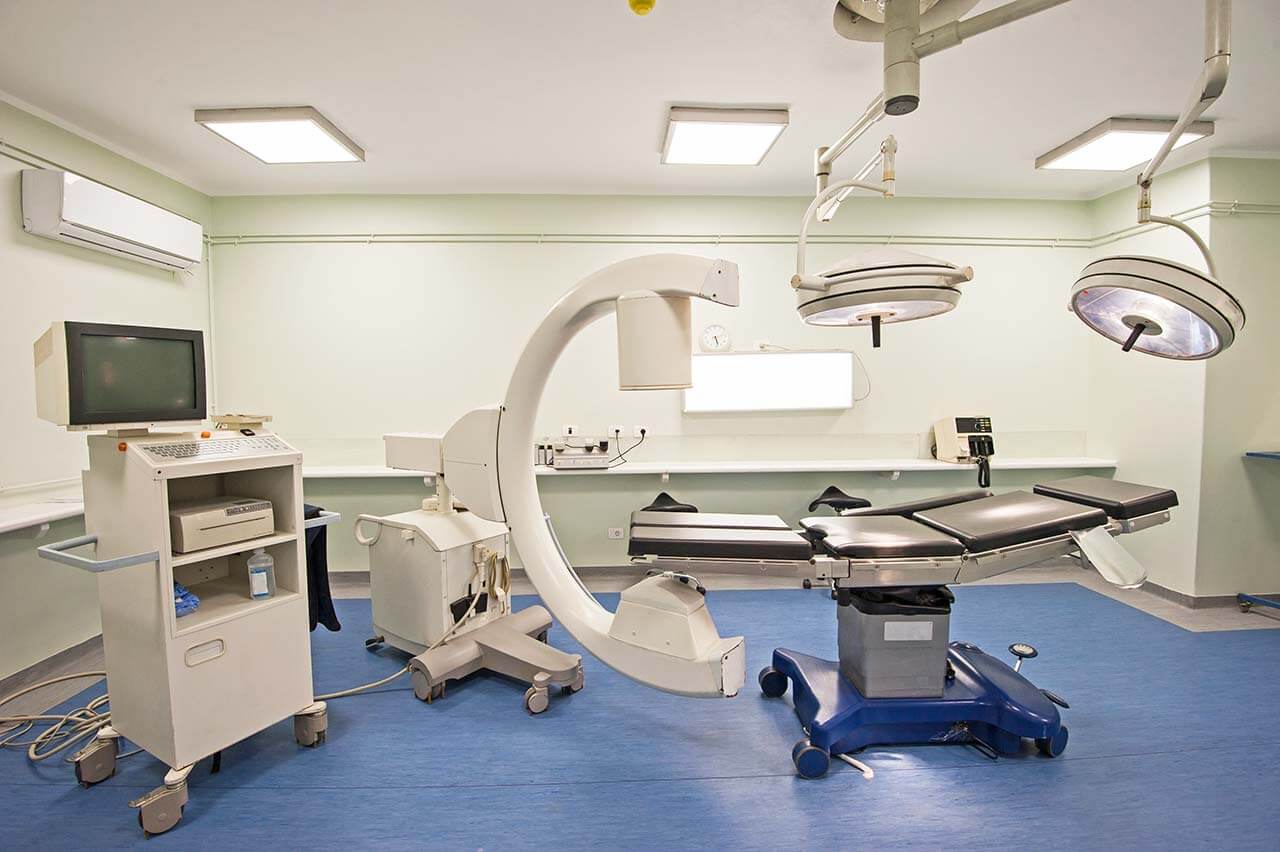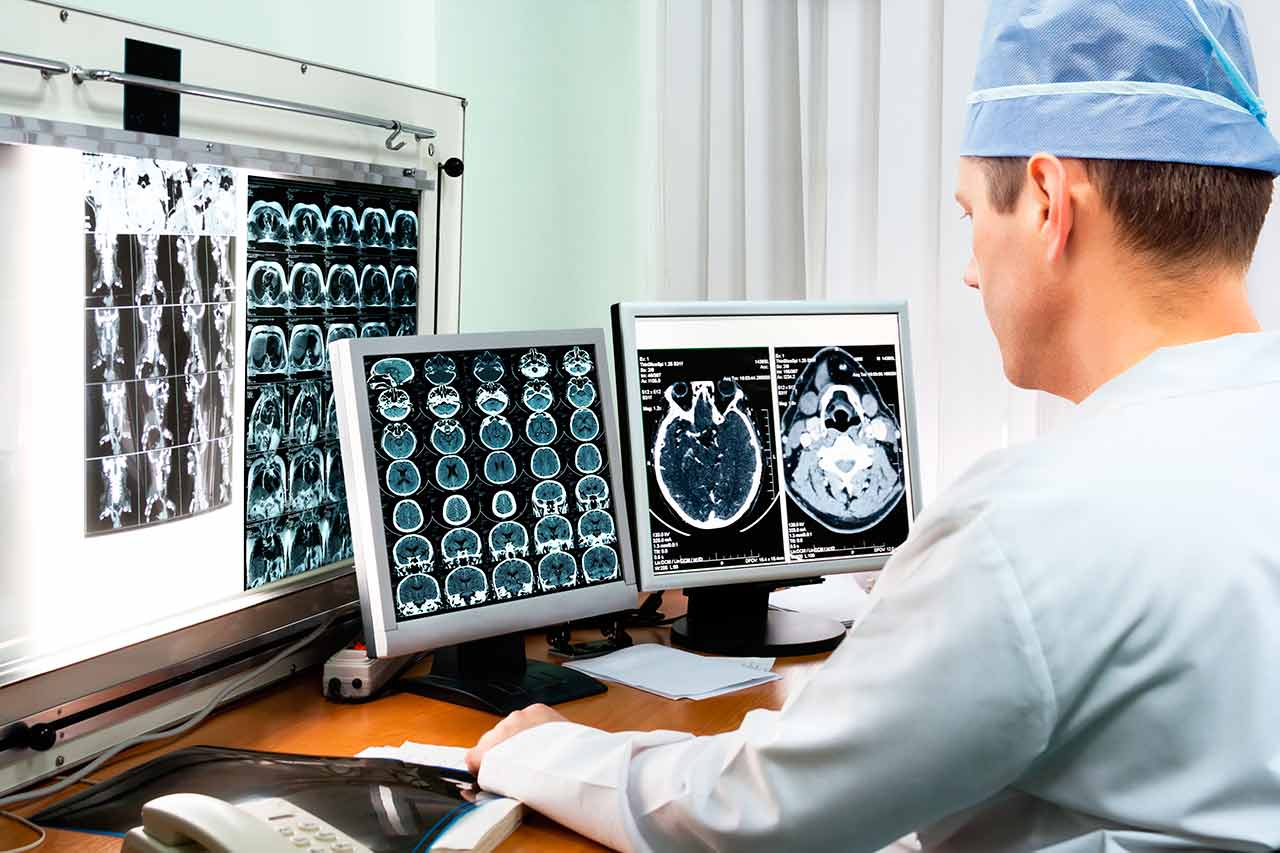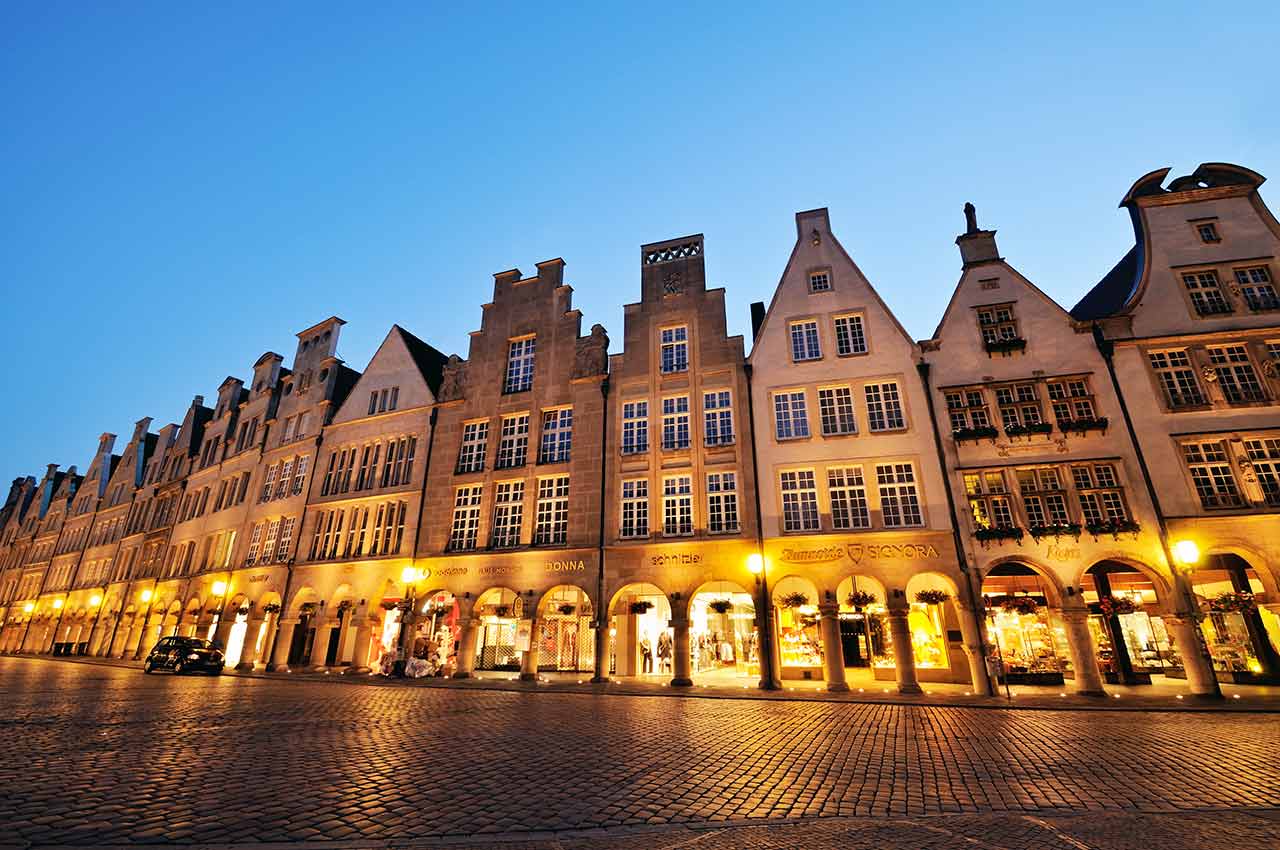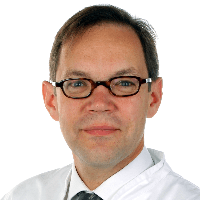
The program includes:
- Initial presentation in the clinic
- clinical history taking
- physical examination
- review of medical records
- laboratory tests:
- complete blood count
- general urine analysis
- biochemical analysis of blood
- indicators of inflammation
- indicators blood coagulation
- x-ray examination
- CT/MRI scan
- preoperative care
- hip replacement
- symptomatic treatment
- control examinations
- physiotherapeutic procedures
- orthopedic appliances
- the cost of essential medicines and materials
- nursing services
- full hospital accommodation
- explanation of future recommendations
How program is carried out
Preliminary preparation for hip replacement includes quitting smoking and drinking alcohol; cancelling non-steroidal anti-inflammatory drugs (diclofenac, ibuprofen); cancelling anticoagulants (warfarin); normalization of body mass, if possible.
Preoperative examination, including consultation with an anesthesiologist and necessary related specialists, takes 1-2 days. According to its results, the most suitable endoprosthesis is selected.
Hip replacement. The operation is performed under general anesthesia. The patient lies on his side, the affected leg is bent and fixed in this position. The surgeon makes an incision 15-20 cm long, minimally traumatizing the muscles and nerve endings. Through this incision, miniature instruments are inserted to remove the damaged joint structures. Healthy bone is adjusted for further reliable implant fixation.
The surgeon installs a femoral stem in the center of the upper part of the femur. Ball-shaped head of the joint is fixed on it. The surgeon also implants a special liner that facilitates movement of the leg and protects the structures of the prosthesis. After the primary fixation of the prosthesis components, the doctor assesses the joint range of motion, as well as the length and symmetry of the lower limb.
The implant is fixed with cement or cementless method. The doctor treats the operating field with antiseptics, conducts its final revision and sutures the wound layer by layer. A temporary drainage is installed in the joint, and a bandage is applied on top.
Postoperative care. During the first day after the intervention the patient stays in the intensive care unit, under round-the-clock medical supervision. After that, with a smooth course of the postoperative period, the patient is transferred to a regular ward and the drains are removed. The range of motion expands gradually, from light toes movements to walking. Walking with the use of walking aids is allowed in 3-5 days after the operation.
Required documents
- Medical records
- X-ray examination, MRI/CT scan (if available)
Service
You may also book:
 BookingHealth Price from:
BookingHealth Price from:
About the department
The Department of Pediatric Orthopedics, Reconstruction of Malformations and Foot Surgery at the University Hospital Muenster offers the full range of services in these medical fields. The main areas of specialization in pediatric orthopedics are the treatment of hip pathologies, feet and hand deformities, and congenital deformities of the lower limbs. The department treats more than 5,000 patients annually. It performs about 200 foot surgeries and more than 150 hip surgical procedures. With 2,000 ultrasound examinations of the hip joint per year, the department is the leading specialized medical facility in the North Rhine-Westphalia region. The Chief Physician of the department is Prof. Dr. med. Robert Rödl.
For the treatment of various deformities in children, for example, different lengths or curvatures of the lower limbs, the department's specialists use external fixators, elongated intra-bone pins and plates with angular stability. In addition, the department's doctors have in their arsenal tremendous range of conservative and surgical treatment methods for impaired foot statics and dynamics due to the neurological diseases, connective tissue degeneration and injuries.
The competence of the department's doctors also includes the treatment of rare diseases. The close cooperation with the Departments of Pediatric Orthopedics, Neurosurgery, Pediatric Cardiology, Pediatric Surgery and Human Genetics allows the team of the department's doctors to provide comprehensive and professional treatment.
The service range of the department includes:
- Diagnostics and treatment of common orthopedic disorders in children
- Diagnostics and treatment of rare diseases in children affecting the musculoskeletal system
- Diagnostics and treatment of clubfoot (therapeutic approach based on the Ponseti method)
- Ultrasound diagnostics of the hip joint, including in newborns
- Diagnostics and treatment of neuro-orthopedic diseases
- Diagnostics and treatment of achondroplasia (bone growth disorder)
- Diagnostics and treatment of limb deformities (for example, different lengths or curvatures of the lower limbs, bone defects)
- Conservative and surgical treatment of foot deformities and diseases
- Diagnostics and treatment of other musculoskeletal diseases
Curriculum vitae
Education and Professional Experience
- 1986 - 1991 Study of Medicine at the Ludwig Maximilian University of Munich.
- 1991 - 1992 Practical year in the medical facilities in Munich, Coventry (England), Muenster.
- 1992 Medical examination at the University of Muenster.
- 1992 - 1993 Internship in the Department of Surgery at the Academic Hospital Munich Harlaching.
- 1993 - 1994 Internship in the Department of General Orthopedics at the University Hospital Muenster.
- 1994 Approbation (medical license).
- 1994 - 1998 Assistant Physician in the Department of General Orthopedics at the University Hospital Muenster.
- 1996 Doctoral thesis defense. Subject: "Experimental, electromyographic studies on the function of the healthy and unstable shoulder".
- 1998 Board certification in General Orthopedics.
- 1998 - 2008 Senior Physician in the Department of General Orthopedics at the University Hospital Muenster.
- 2004 Habilitation on the subject: "Limb-preserving tumor surgeries".
- 2004 Board certification in Special Orthopedic Surgery.
- 2005 Board certification in Pediatric Orthopedics.
- Since 2008 Chief Physician of the Department of Pediatric Orthopedics, Reconstruction of Malformations and Foot Surgery at the University Hospital Muenster.
Additional Qualifications and Awards
- 2006 Konrad Biesalski Prize of the German Society for Orthopedics and Orthopedic Surgery.
- 1990 - 1991 Research Assistant at the Institute of Anatomy in Munich.
- 1998 Limb Deformity Course (Prof. Paley).
- 1999 Advanced medical training, Department of Pediatric Orthopedics of the Orthopedic Hospital Speising, Vienna, Austria (Prof. F. Grill).
- 2000 Advanced medical training, Orthopedic Hospital Olga, Stuttgart (Prof. K. Parsch).
- 2000 Advanced medical training, Orthopedic Children's Hospital, Aschau (Dr. med. J. Correll).
- 2001 Advanced medical training, Department of Pediatric Orthopedics at the University Hospital Basel, Switzerland (Prof. F. Hefti).
- 2002 Advanced medical training, Department of Pediatric Orthopedics at the Municipal Hospital Dortmund (Prof. B.-D. Katthagen).
Photo of the doctor: (c) Universitätsklinikum Münster
About hospital
According to the Focus magazine, the University Hospital Muenster ranks among the top German hospitals!
The hospital belongs to the most prestigious medical institutions in Germany. The hospital is distinguished by a high professionalism of its doctors, state-of-the-art technological equipment and the availability of the most advanced diagnostic and therapeutic capabilities ensuring the first-class medical services. The hospital integrates more than 30 specialized departments, as well as numerous institutes and centers, thus representing all the specialties of modern medicine. The hospital treats more than 64,000 inpatients and 500,000 outpatients every year, which is an indisputable evidence of the highest quality of medical services.
The medical team of the hospital, consisting of more than 10,000 employers, is committed to preserving the physical health of patients, providing them with psychological support and compassionate attitude throughout the entire therapeutic process.
The hospital has succeeded in all specialties of medicine, however, main areas of its specialization include oncology, treatment of cardiovascular, neurological diseases, transplant medicine, psychiatry and psychosomatics, pediatrics with a special focus on rare diseases in children, traumatology, orthopedics, prenatal medicine, and reproductive medicine. In addition, key importance is given to scientific research and training of medical students, so that the specialists of the hospital make a momentous contribution to the development of medicine as a whole.
Photo: (с) depositphotos
Accommodation in hospital
Patients rooms
The patients of the University Hospital Muenster live in single or double rooms. The rooms are made in bright colors and modern design. Each room has an ensuite bathroom with shower and toilet. The standard room includes an automatically adjustable bed, a bedside table, a table and chairs for receiving visitors, a telephone and a TV. The hospital offers access to the Internet. If desired, the patient can also stay in the enhanced-comfort room.
Meals and Menus
The patients of the hospital are offered a tasty and balanced three meals a day: breakfast, lunch and dinner. The menu always features diet and vegetarian dishes. If for any reason you do not eat all the food, you will be provided with an individual menu. Please inform the medical staff about your dietary preferences prior to the treatment.
Further details
Standard rooms include:
Religion
Religious services are available upon request.
Accompanying person
During the inpatient program, an accompanying person may stay with you in a room or at the hotel of your choice.
Hotel
During the outpatient program, you can live at a hotel of your choice. Managers will help you to choose the most suitable options.
The hospital offers a full range of laboratory tests (general, hormonal, tests for infections, antibodies, tumor markers, etc.), genetic tests, various modifications of ultrasound scans, CT scans, MRI and PET / CT, angiography, myelography, biopsy and other examinations. Treatment with medications, endoscopic and robotic operations, stereotaxic interventions is carried out here, modern types of radiation therapy are also used. The hospital offers patients all the necessary therapeutic techniques.
- Stereotactic radiotherapy, including intracranial one
- Thulium and holmium laser enucleation of the prostate
- HIPEC for peritoneal cancer
- Imlantation of mechanical heart support systems
- Assisted reproductive technologies
These are arthrosis and sports injuries of the joints, benign neoplasms and malignant tumors of various localizations, spinal injuries, osteoporosis, benign prostatic hyperplasia, urolithiasis, inflammatory bowel disease and other pathologies.
- Traumatology and hand surgery
- Urology
- General and abdominal surgery
- Cardiology and cardiac surgery
- Obstetrics and gynecology
The hospital's team consists of more than 10,000 highly qualified employees.
